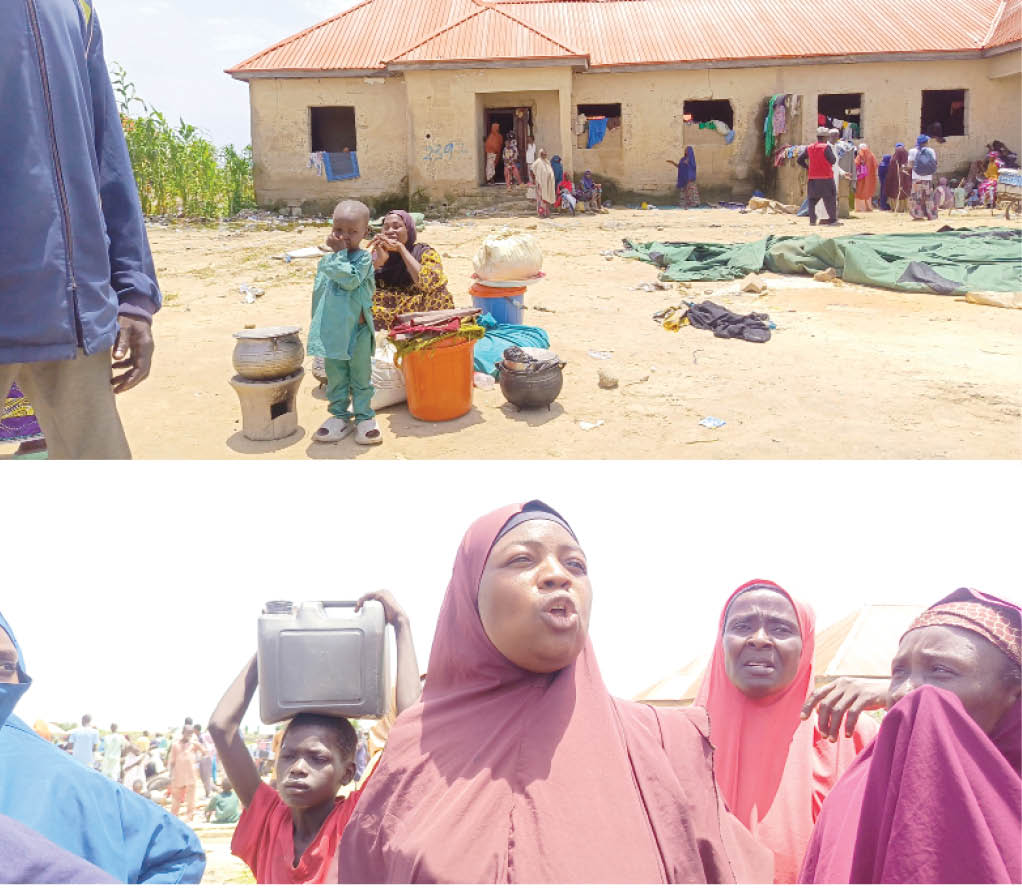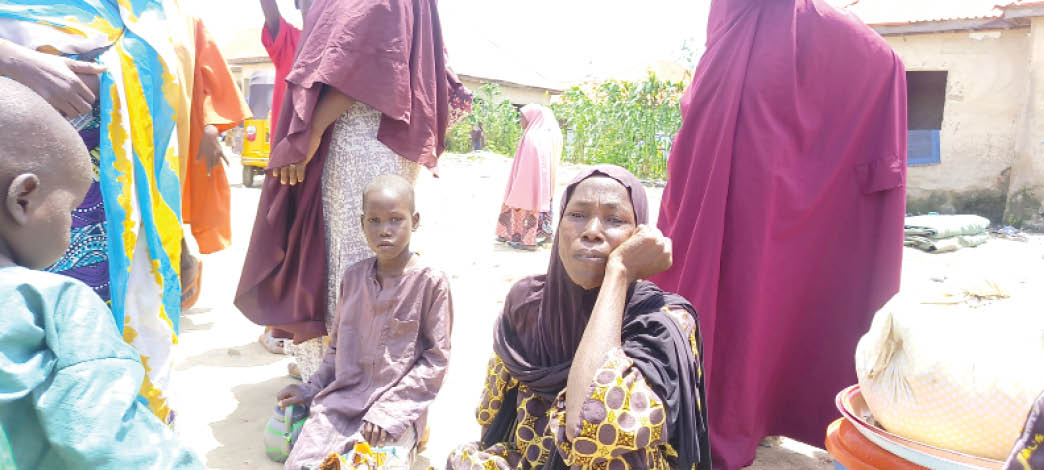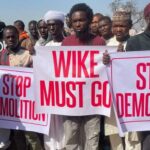The decision by Borno State to shut down relief camps for people displaced by the devastating floods that ravaged Maiduguri Metropolitan Council (MMC) and Jere Local Government Area (LGA) has thrown some families into confusion.
Some survivors of the flood taking refuge inside the camps said the state government’s decision will push them into deeper crises, because their houses are inhabitable, with nowhere to go.
But since the incident happened, government officials and some humanitarian agencies, who have been managing the camps, have been complaining that some people, who were not affected by the flood, have infiltrated the camps.
People from nearby Damboa LGA and others from as far as Bama, Mafa, Dikwa, among others, have allegedly moved to the emergency camps, all in an effort to collect food and other support items meant for victims of the recent flood.
- Flood displaces over 2,000, submerges 100 homes in Kwara community
- Preparing for dam breaks, flooding: Lessons from Alau Dam
The setting up of the flood victims’ camps came at a time the state government was pushing hard to complete the resettlement of victims of the Boko Haram insurgency who have not been in their ancestral homes for over 15 years.
On the latest development, Governor Babagana Umara Zulum had said that only camps that are being operated in schools would be closed to allow learning activities to fully resume across the state.
However, our correspondent who went round the city saw some of the people leaving one of the major camps, Bakassi, in drops, and many of them interviewed said they were discharged by the camp’s officials. Zara Isa, a survivor of Fariya, said the flood water is still around their homes and she does not know where to go.
“I arrived at this camp six days ago with my six children. Today, they asked everyone to leave. We were given food and money but we didn’t have anywhere to go.
“My husband was living on the barricade of the expressway close to Langalanga. He pitched a mosquito net there to sleep. We don’t have anywhere to go,” she said.
Habiba Idris, from Ali Kotoko, said she has 10 children, and they relocated to the camp after being sent away from Satomi School.

“I spent two days here but they are asking us to exit the camp today; where else can we go for goodness sake?” she asked.
“Government gave us food and cash but we don’t know where to go. We thank Governor Zulum but more time should be given to us,” she pleaded.
Another survivor from Bulabulin, claimed that the flood had hit her harder than anyone can imagine, appealing to the government not to put her in deeper suffering and destitution.
“I lost my sister, Adama and her six children to the flood. The last time I saw her was when I knocked at her door to tell her that the floodwater submerged the entire area.
“She quickly rushed back to pick up her children but the water swelled up and I had to run for my dear life. I will live with the guilt for not staying behind to help,” she said.
Another survivor, Rabi Ibrahim, said she was thrown into the street by the night flood, along with her seven children.
“We checked our house when the water receded. The flood pulled down the house’s roof and back fence. In fact, one can’t access the house because the entrance building had collapsed,” she said.
We’ll give them temporary tents – Commissioner
However, the Commissioner of Information, Usman Tar, said temporary tents would be provided for the survivors to pitch in their homes, adding that the government will assess the level of destruction and assist them to rebuild.
Since the flood disaster erupted, the state had established 36 Internally Displaced Persons (IDP) Camps to take care of thousands of residents affected by the flood.
When our correspondent went round affected areas where the water receded, destroyed homes and government property were seen with a lot of environmental issues.
Gwange graveyard oozes
At Gwange graveyard, when our correspondent visited, residents around the place complained of pungent smell oozing from the burial ground.
The Gwange cemetery is the biggest and oldest in Maiduguri, where thousands of people have been buried.
Speaking to our correspondent, one of the few people living in the area said environmental workers sent by the government fumigated the cemetery.
One of them, Umara Baana, said: “The flood water destroyed many graves and the soil is too loose to walk on, preventing people from entering to fix graves.
“So the whole area is smelling. The entire area is filthy, and the structures are not habitable,” he said.
“Government should give us more grace to put our homes and environment in order before closing the camps,” Umara said.
The two weeks closure controversy
It will be recalled that the information commissioner, Prof Tar, had said on Wednesday that the government will close all the 32 relief camps established to help the flood victims within 2 weeks, counting from last Monday.
Briefing journalists at the Flood Situation Room in Maiduguri, on Wednesday, Tar said: “The state government has taken the decision that the IDP camps shall not be sustained for more than 2 weeks.
“Our projection is based on the fact that within two weeks the disaster phase, especially the flood shall recede to a significant level that people would have the opportunity to return to their home,” he said.
Zulum gives different perspective during meeting with UN
However, while receiving United Nations’ (UN) officials at the Government House in Maiduguri, yesterday, Zulum said those whose homes were inhabitable would not leave the camps, but warned against indiscriminate opening of additional relief centres.
He also said camps established in schools would be closed to allow children to return to their classes.
“Now that we have succeeded in the rescue mission, and as the water recedes, we must collaborate together to avoid duplication of efforts in the affected communities.
“Unfortunately, we have realised that most of the people trooping into the newly opened camps are not actual victims of the flood disaster.
“Let me tell you a scenario. I was at Yerwa Girls Secondary school where I presided over the distribution of cash, food and non-food items. Surprisingly, when I left and was driving to Gomari Airport after the exercise, I saw people carrying the bags of rice and other items on their shoulders heading towards the same direction of Gomari where there was no any single incident of flood, signifying that many trooping inside camps are not victims.
“We need UN assistance in rebuilding the destroyed houses, hospitals, schools and critical infrastructure. We want to use this opportunity to thank the UN, all stakeholders and individuals that have assisted us in one way or the other in this trying moment,” he said.
Responding on behalf of the UN Delegation, Deputy National Humanitarian Coordinator, Esty Sutyoko, described the flood situation in Maiduguri as “crisis within crisis”, calling on the governor to help in providing shelter before returning the displaced persons back to their homes.
“The very important part is, as you mentioned, the damage assessments on the housing, recognising that there are severity differences and the importance of the safe return of the people before they can go back.
“So, we are very much looking forward to the plan of the clean-up of them, of them being able to return, and we very much welcome the merging and the strategy you have of the camps acknowledging that the schools and the public facilities really do need to return back.
“So, that is a very much welcomed decision, and we very much commend you for that,” she said. While commending the governor for his commitment to relieve people from the hardship, she promised to work closely with the office of the Borno State Special Adviser on Humanitarian Affairs and Sustainable Development, Dr. Mairo Mandara for immediate and durable solutions to the flood crisis.

 Join Daily Trust WhatsApp Community For Quick Access To News and Happenings Around You.
Join Daily Trust WhatsApp Community For Quick Access To News and Happenings Around You.

